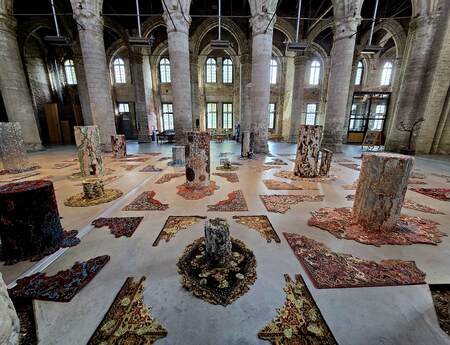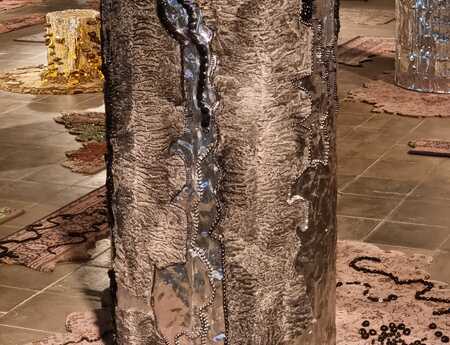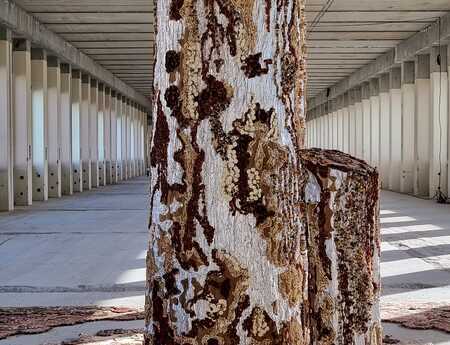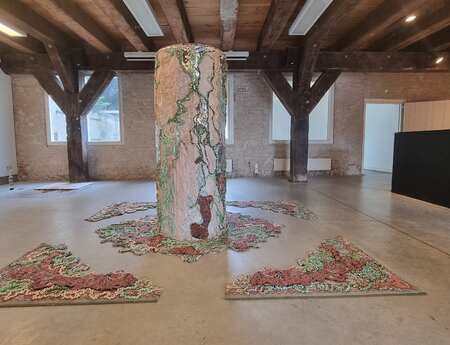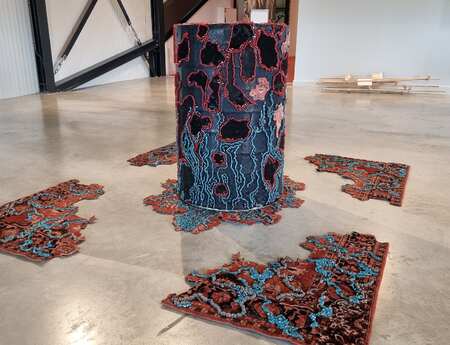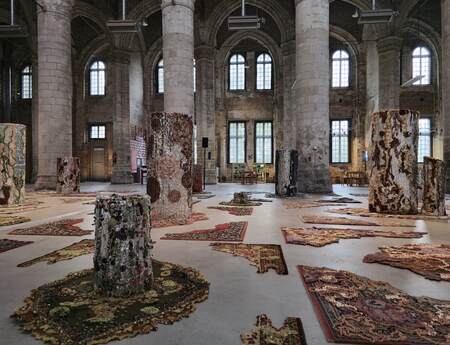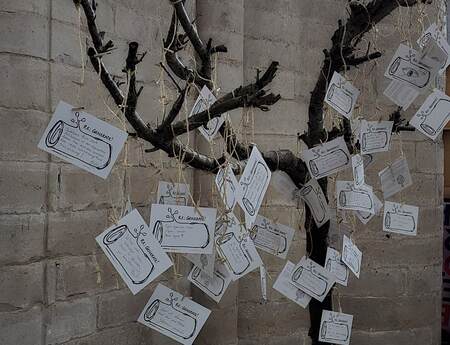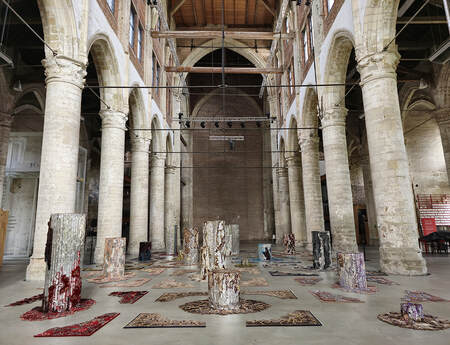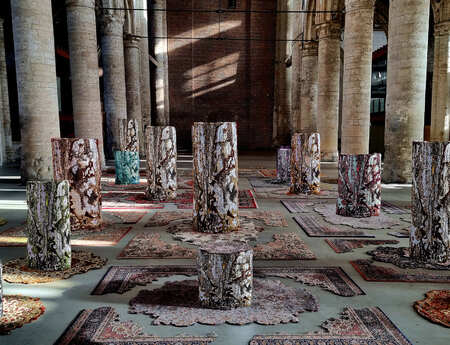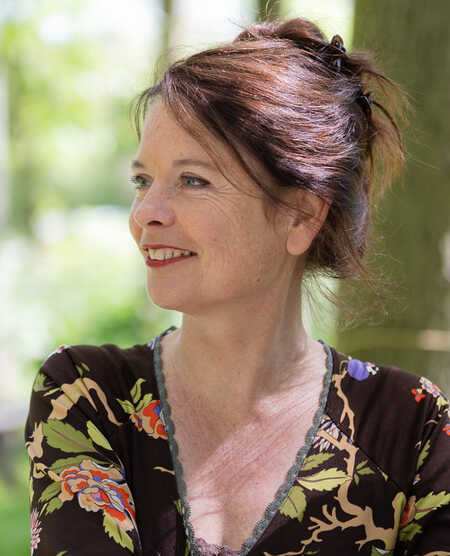
A journey of awareness and connection
Bianca Runge, artist with a mission, invites you to reflect on our relationship with nature in her interactive Labyrinth.
With her work, Bianca confronts the viewer with the reality of our time, but also offers hope and inspires us to think about the interconnectedness of all living things and the important role that trees play in sustaining our planet.
Bianca Runge grew up in the center of the Netherlands in the first block of houses that was completed in the growth center of Huizen. Around her, entire residential areas were built on reclaimed sand plains. This is where she found her 'treasures'; screws, beads and coins with which she could create her own and safe world in a world with people she did not understand. Bianca always felt a strong connection with nature. She therefore chose the wooded Arnhem to study liberal arts there. She now lives and works in the province of Zeeland for its peace and quiet.
In the first half of her art career, Bianca cut holes in reality, a reality that is presented to us in magazines and media. By removing the subject from everything, a new world emerged. In this way she wanted to demonstrate that 'reality' is not a fixed fact. And that unexpected new reality created space in her thinking. She was intrigued by 'residual space'. She finds the theory about the Zero Point Field fascinating. It's about the endless space between everything. The empty space that connects everything to everything and creates coherence; in the world of atoms, living organisms, in the cosmos, and far beyond. By enlarging the layered works you were drawn deeper into the image, beyond the pixels of the printed matter to this infinite universe.
Between 2009 and 2015 she spent a lot of time on her artist initiative Museum Le Secet and putting together exhibitions for art space Willem3 in Vlissingen. This made her realize that she also wanted to discuss current themes in her own work and that she wanted more interaction with her audience. Out of power to cut down trees, she started wrapping trunks in aluminum foil to protect and preserve them. She built a desolate forest through which you could wander, sought collaboration with festivals and made the public part of the installation. Her work could also be seen in the Anningahof in Zwolle and in the Slot Zeist sculpture route.
At the time of Corona she could fully focus on making art. Each tree trunk 'preserved' in aluminum became a blank canvas on which Bianca Runge 'paints' with excess beads. The beads, chains and other luxury items used proliferate on the aluminum like moss, fungi or bugs. Cut carpets open new paths on the ground and remind us that we can also make different choices. Giving nature a voice.
Each tribe is an individual work, a mordern totem or memorial place, with a title that refers to our consumer society. The trunks together form a large labyrinth that you can walk through. A labyrinth has traditionally been a place for reflection. She uses seduction to take us into the depths. There are several layers to the work, for example the titles and subtitles tell facts about luxury items.
Industrialization
The jewelry refers not only to natural organisms but also to the beads traditionally produced in Europe that were exchanged and traded around the world. Indigenous cultures used it to design their own motifs. The carpets based on Oriental motifs were machine-made in Europe after the Second World War. They refer to the period of reconstruction, when people were given money and thought the economy could grow indefinitely. We are now seeing the disastrous consequences of this.
Bianca is still a collector and she scours thrift stores and marketplaces in search of beads, carpets and other redundant luxury items with which she creates her own reality. As an artist she challenges consumer society and gives nature a voice.
